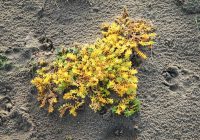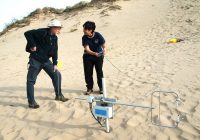Dr Phil Smith’s Wildlife Notes
November 2015
The first half of the autumn was characterised by dry, settled weather caused by areas of high pressure, the North Atlantic Jet Stream being positioned well to the north of the British Isles; as a result only about 40% of average rainfall was recorded in Northwest England during September and October. However, in early November everything changed, an unusually powerful Jet Stream drifting south put us in the direct line of a series of low-pressure systems bringing wind and rain. These included three named storms: Abigail, Barney and Clodagh, which contributed to a doubling of our normal November rainfall, though we had nothing like the quantities that fell on Cumbria only 60 miles up the road. Nevertheless, this was a bonus for our much depleted ground water-table. Measurements made in the Devil’s Hole slack by Nick O’Keeffe and myself showed that the water level rose by about 25cm during the month. Even so, by the 30th, it was still 21cm below the ground surface in the deepest part of the slack, which often floods deeply in wet winters. Similarly, Patricia Lockwood tells me that Wicks Lake at Formby Point had just begun to hold the shallowest of water by the end of November.
As well as being wetter than expected, the month was also incredibly mild. I saw frost on only one morning, while west Wales recorded the UK record high November temperature of 22.3oC in the first week. 2015 seems set to be the warmest year on record world-wide. As a result, many of our wild plants remained in flower well into the month. Both Blue Fleabane and Sea Mayweed were in full flower at Ainsdale on 10th, though Sea Milkwort foliage was showing autumn colours. The non-native Buttonweed flowered in front of the main hide at Marshside RSPR reserve throughout the month. Insects were also still about; Trevor Davenport reported a Speckled Bush-cricket in his garage on 9th, while I found a colourful Birch Shieldbug on my car the following day.
A walk down to Cabin Hill via the Ravenmeols Woods on 3rd revealed an autumn influx of Blackbirds, very wild and flighty, together with a small flock of Scandinavian Redwings. The open dunes provided a male Stonechat, while Kestrel, Sparrowhawk and Buzzard represented the raptors. The star bird, though, was a Short-eared Owl flying high towards Altcar Rifle Range, mobbed by two Carrion Crows. These owls were reported widely in the region, with several together at the new Lancashire Wildlife Trust reserve of Lunt Meadows.
Marshside became extensively flooded during the month, attracting large numbers of ducks. I counted at least 80 elegant Pintails and 90 Shovelers on 25th, together with the inevitable Mallard, Teal, Wigeon and Gadwall. As usual, two predatory Greater Black-backed Gulls were lurking menacingly, on the look-out for any injured or sick birds. A spectacular flock of about 4000 Black-tailed Godwits also graced the marsh. These come every year from their breeding grounds in Iceland, leg-rings that can be read in the field revealing the extent of their wanderings. Between 2003 and 2014, one individual was spotted in Iceland, northern France, Portugal and a large number of different places in England, including Hampshire, Essex, Kent, Lincolnshire and Norfolk, as well as Leighton Moss, Lancashire.
Few usual birds were reported during the month but John Dempsey told me of a male Black Redstart that spent several days around the Ainsdale Discovery Centre, while a Water Pipit at Crossens Marsh was a good find.
A report from Irene Delgado-Fernandez of Edge Hill University summarises ongoing research in the Devil’s Hole at Ravenmeols, one of the largest dune blow-outs in Europe. Funded by Natural England, the studies are designed to investigate physical processes that maintain these important dune landscape features. During a three-week period in October, eleven researchers from Edge Hill, the University of Ulster, Flinders University, Australia and the University of Guelph, Canada, collected a huge amount of data using complex equipment, including three-dimensional ultrasonic anemometers. These investigations are internationally significant, giving a new perspective on the Devil’s Hole, which is already known to have enormous wildlife interest.




